![]()
WE REMEMBER
patrolman stephen r. gilroy
emergency service squad 8
john and al’s sports
january 19, 1973
a day that lives in esu infamy
REFLECTIONS of Patrolman Stephen Gilroy fROM nypd lieutenant FRANK BOLZ (ret.):
For 2 and half months in 1972 I took part as the Detective Bureau Representative. in the daily presentations, coordinated by Captain Artie Freeman, ESU at Floyd Bennett Field. This was to deal with possibility of Hostage Takings.
During the roll playing each afternoon. ESU personnel would rotate the different Trucks.. I might have been fortunate enough to have worked with Steve during that two and a half months. Though I was never an E man, I recognize that the Hostage Negotiating Program might not have been successful had it not been for the support of the ESU. people. Danny St John, Frank Gallagher, Jack Casey, Al Baker, Kevin Barry and a bunch of guys that used to tease the heck out of me. But they were always there to protect and support the HNT.
These ESU guys were at the John and Al’s robbery where Steve lost his life.Frank Gallagher, who recovered Steve’s hat the next day, at the scene, Jack Casey, who with Gallagher rescued Hostages from gun shop roof. Al Baker with heavy body armor
Others present Dr. Harvey Schlossberg at command post and me Det. lieutenant Frank Bolz working coordinator Detectives at the scene
No doubt there were many , many more.
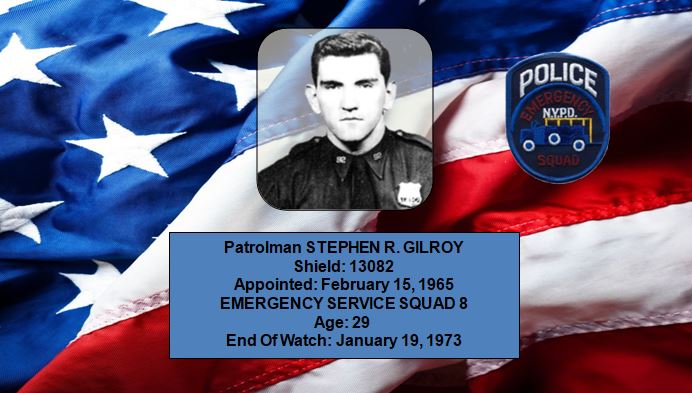
The following is a condensed version of the wikipedia page written by Mike Bosak.
Background
The 1973 Brooklyn hostage crisis occurred when four robbers took hostages and engaged in a standoff with the New York City Police Department over the course of 47 hours from January 19 to January 21, 1973. One police officer was killed, and two officers and a perpetrator were injured, all within the first three hours of the incident; there were no further casualties during the standoff.
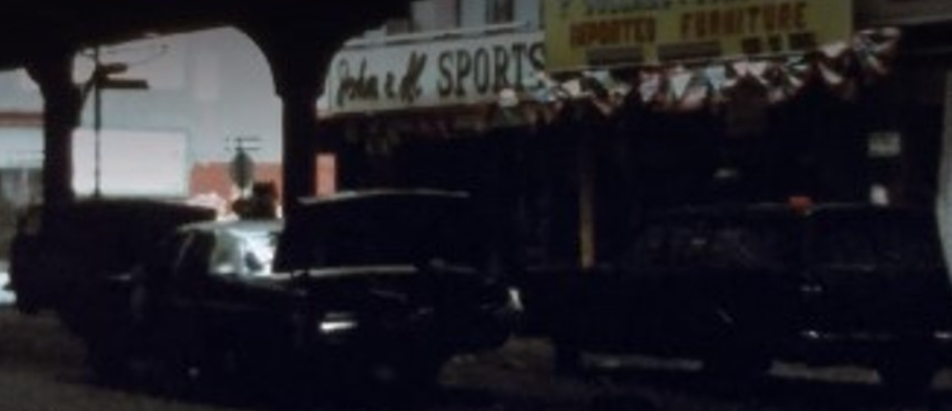
The incident began on the morning of January 19, when four men attempted to rob John and Al’s Sports, Inc., a sporting goods store located at 927 Broadway, to acquire weapons. The four black american sunni muslim men were spurred by the hanafi muslim massacre in Washington, D.C. a day prior. NYPD officers responding to the robbery confronted them, sparking a shootout followed by a lengthy standoff. The perpetrators retreated back into the store and took twelve hostages. The NYPD used crisis negotiation techniques newly pioneered by Detective and psychologist Harvey Schlossberg, and Lieutenant Frank Bolz, to peacefully ensure the release and rescue of all twelve hostages and the surrender and arrest of all four perpetrators. Schlossberg is known as the “father of modern police psychology” as the NYPD and other agencies sought to learn from the events of the standoff. The incident has since been described in retrospect as the “birthplace of hostage negotiation”.
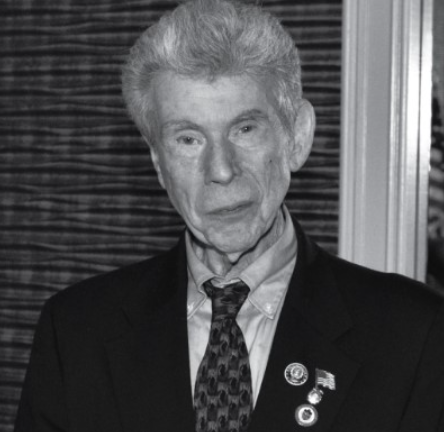 Harvey Schlossberg
Harvey Schlossberg
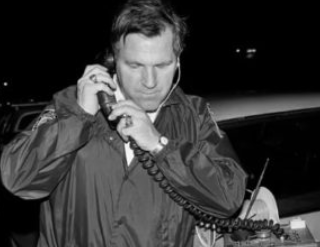 Frank Bolz
Frank Bolz
Incident
January 19
On Friday, January 19, 1973, at around 1700 hours, the four perpetrators entered John and Al’s and began browsing the store’s merchandise. After a few minutes, they suddenly drew a sawed-off shotgun and three handguns, and demanded firearms and ammunition. They then armed themselves with additional weapons from the store.
When the first responding officers arrived at 1742 hours from the 9-0 precinct, the perpetrators exited the store on Melrose Street using the store’s owner as a human shield. There they exchanged gunfire with the police. It is unclear who fired first, but during the exchange Officer Jose Adorno was struck in the arm and one perp was struck in the abdomen. The perpetrators promptly retreated back into the store with twelve hostages. This sparked a shootout between them and police, prompting the call for Emergency Service units.
At around 1810 hours, ESU Officer Stephen R. Gilroy (29) was shot in the head and killed while taking a position behind a subway el pillar. Officer Frank Carpentier was struck in his knee while moving his car patrol car into a position to shield Gilroy in an attempt to rescue him. Carpentier in turn was rescued by an ESU team that laid suppressive fire on the perpetrators to cover their extraction. NYPD officers did not fire again for the rest of the standoff.

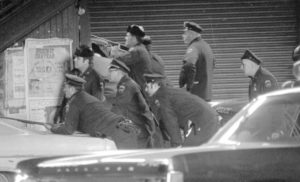
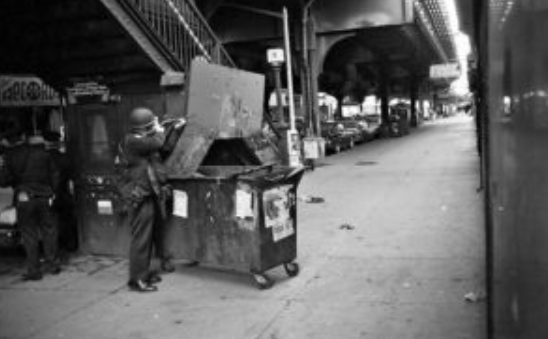
After the perpetrators ripped out the store’s phone lines, police used a megaphone to communicate with them, resulting in the release of a hostage around 2000 hours. She told police the perpetrators would kill the hostages if they were not allowed to leave. Around 2100 hours, the perpetrators indicated they needed a doctor, but refused a request to surrender in exchange for medical treatment.
ESU deployed the Emergency Rescue Vehicle (ERV), an unarmed armored personnel carrier, to rescue officers and civilians trapped along the streets and in stores across from John and Al’s. During this operation, the perpetrators fired around 40 shots at the ERV to no effect.
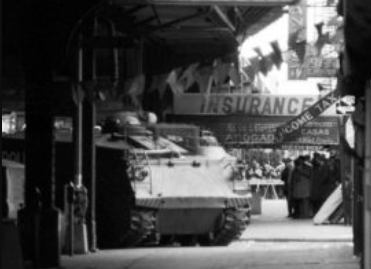

January 20
On Saturday, January 20, at 0050 hours, another hostage was released, carrying a note urging Muslims to unite, as well as requests for food and medical attention. At 0400 hours, a reverend from a Christian church in the area attempted to negotiate with the suspects from inside the ERV to no response. Forty minutes later, another attempt was made by three imams. This time, the perpetrators allowed one imam to enter the store; he returned five minutes later and told police the perpetrators stated they were willing to die for Allah.
At 1115 hours, the perpetrators were given a walkie-talkie, but when Deputy Commissioner Benjamin Ward spoke through it, the walkie-talkie was thrown out of the store. At 1445 hours, two lawyers offered to represent the perpetrators at trial, but were met by six shots at the ERV when they urged the perpetrators to take the walkie-talkie and the ERV backed away, a hostage was sent out to retrieve it.
Around 1600 hours, a doctor arrived with a nurse, having been summoned by the NYPD. An offer was made to treat the earlier shot perpetrators if he was brought out of the store, but the perpetrators made a counteroffer to release one hostage in exchange for the doctor and the nurse entering the store to treat the injury and serve as intermediaries. The exchange was made. Forty minutes later, the doctor and nurse returned with the names and telephone numbers of the nine remaining hostages.
January 21
Apparently sensing something, at 0745 hours, the perpetrators fired nine shots at a parked police car and stores across the street. Emergency Service personnel began moving drilling equipment to the basement of the furniture store next to John and Al’s to begin tunneling into the sporting goods store.
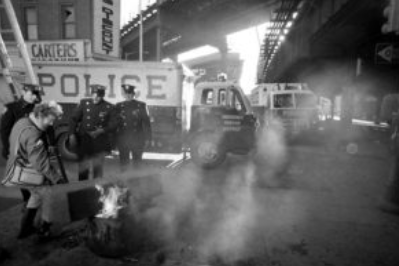
At 1245 hours, the hostages were moved to a specific corner of the store where they would supposedly be out of the line of fire. Unbeknownst to the perpetrators, in this corner was a half-inch plasterboard wall that hid a stairwell leading to the roof of the store. While the perpetrators went to investigate the sounds of Emergency Service working next door, the hostages broke through the wall and climbed the stairs to the roof. They were met by ESU officers who lowered a ladder from an adjoining roof, allowing all nine to escape. The perpetrators attempted to reach the roof from another stairwell but were unable to, as they had barricaded it earlier.
With the hostages now secure, the NYPD prepared for the possibility that the perpetrators would attempt a last stand as they had threatened to earlier. Sporadic gunfire erupted from the store throughout the day to no effect. Around 1655 hours, carrying their injured colleague on a cot, the perpetrators exited the store and surrendered.
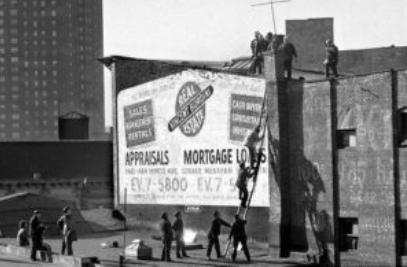
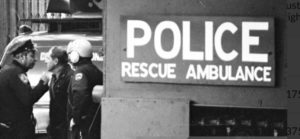
Aftermath
Trial and sentencing
In 1974, the trial of the four perpetrators was held at the New York Supreme Court in Brooklyn. The defense contended that the robbery only occurred to acquire weapons for self-defense because “they feared attacks by their rivals, the Black Muslims”, spurred by the killings of seven Sunni Muslims in Washington, D.C. the day prior, and that the standoff only transpired because they were “forced to defend [themselves] from an unprovoked attack by police officers”.
On June 21, 1974, a jury found the four defendants guilty of 41 counts, including assault, robbery, and kidnapping. Only one was was convicted for Patrolman Gilroy’s murder.
Legacy
Patrolman Stephen R. Gilroy’s funeral was held at 0930 hours on January 23, 1973 at St. Cecilia’s Roman Catholic Church in Greenpoint, Brooklyn. He was buried at First Cavalry Cemetery in Long Island City.
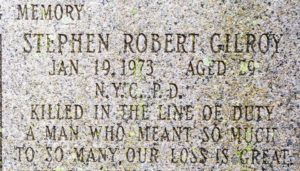
CLICK HERE to view pictures and videos
of the 50th anniversary commemoration ceremony
In the summer of 2024, Stephen was remembered by the NYPD and the Bomb squad by having a bomb sniffing dog named after him. Stephen’s wife was asked to suggested a name. Going against tradition, as those who know Patricia isn’t surprising, she declined using a proper name such as Gilroy. She asked for, and it was approved, the name ‘Crusader’. Stephen, along with his brothers, played for a semi pro football team in Brooklyn, New York, called the Crusaders.
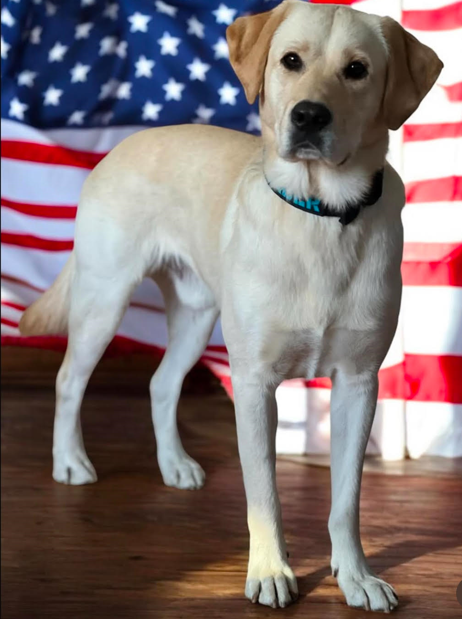 Crusader
Crusader
“A COP NAMED GILROY”
A 1975 film of Stephen’s life and the John & Al job
